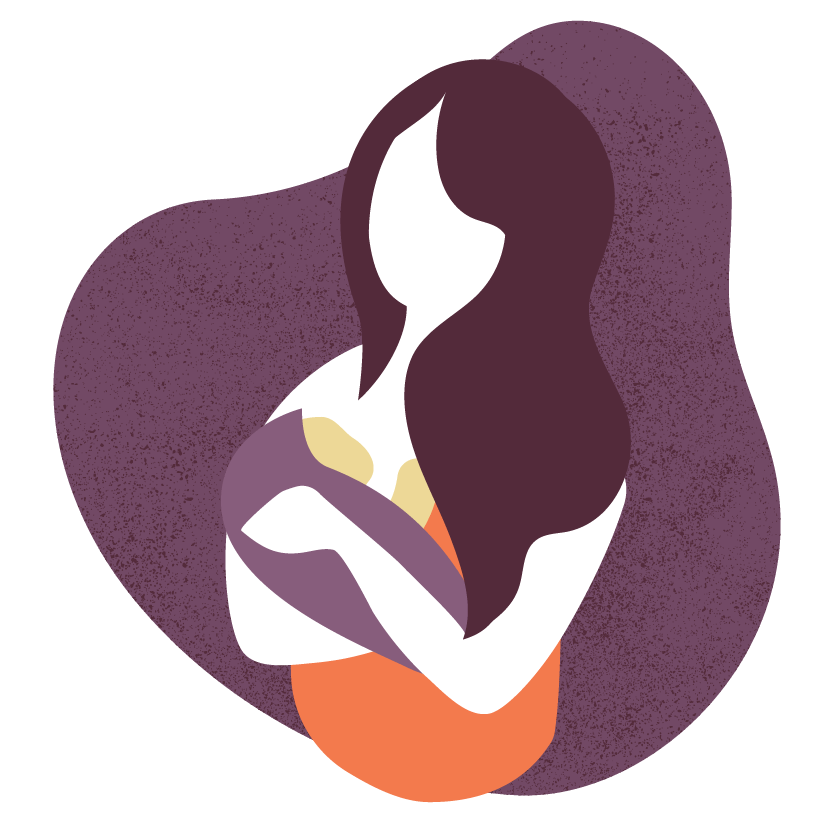Postpartum Depression: Signs and Resources for Help

Postpartum depression (PPD) is one of the most common complications associated with pregnancy. In fact, the National Institute of Mental Health reports that PPD affects up to one in seven women, or 15% of births. But despite its prevalence, medication specifically tailored to treating this condition only recently became a reality when the U.S. Food and Drug Administration approved the first PPD drug in March 2019.
Postpartum depression affects up to
1 in 7
women
15%
of births
Of course, the development of new PPD treatments is only beneficial if women are equipped with the knowledge to seek treatment in the first place. A survey of U.S. women on their experience with childbirth (PDF, 1 MB) showed that less than one-half of women attending a postpartum visit reported that they received enough information about PPD.
It is critical for new mothers to understand the early signs of this condition and have the means to find help from health care professionals. Nursing@Georgetown created this resource to help people better understand PPD and how they can address it if they are experiencing symptoms.
What Is Postpartum Depression (PPD)?
Postpartum depression is a mood disorder that can appear days or months after a woman gives birth, with symptoms lasting longer than two weeks, according to the American Psychological Association’s guide on PPD.
How to Recognize PPD
A woman experiencing postpartum depression may exhibit any of the following symptoms:
- Excessive worrying or feeling overly anxious.
- Difficulty sleeping or sleeping too much.
- Trouble with concentration and memory.
- Difficulty making decisions.
- Lack of interest in self-care, like dressing and bathing.
- Poor appetite or overeating.
- Lack of energy to perform everyday tasks.
- Crying frequently, even about minor things.
- Showing too much (or not enough) concernfor the baby.
- Loss of pleasure or interest in things that used to be enjoyable.
Some of these symptoms — such as sleeping problems, crying, or excessive worrying — can also be normal responses to childbirth. Many women experience the “baby blues,” which most often go away within a few days or a week, according to the Mayo Clinic. The symptoms of postpartum depression are more severe and last much longer. This can also be the case for women who experience postpartum post-traumatic stress disorder as a result of a real or perceived harm that occurs during labor or delivery, or those who exhibit anxiety disorders prior to pregnancy.
Postpartum psychosis, on the other end of the spectrum, is a rare but dangerous condition that occurs approximately one to four times for every 1,000 births. In addition to some of the symptoms of PPD, postpartum psychosis can be characterized by thoughts of harming oneself or one’s baby, and/or experiencing hallucinations.
Responding to Postpartum Depression
When a woman or family member suspects postpartum depression, it should not be ignored. Understanding how to identify and address PPD is a process unique to each woman and her family. Read on to learn more about resources available to women who may be experiencing postpartum depression.

Types of Treatment
Distinguishing the baby blues from more serious conditions such as postpartum depression and postpartum psychosis can be difficult for new moms and their families, so recognizing the signs early and contacting a health care provider is key to effective treatment. Consult a health care provider to discuss the different types of treatment for postpartum depression, such as counseling or, in some situations, antidepressant medications.

Finding Providers and Community
Regular health checkups after childbirth are linked to decreased incidence of PPD. Although postpartum care in the United States is often less of a priority compared to other countries, certain organizations offer online resources that can help women connect with support groups or locate providers who specialize in treatment. The Office on Women’s Health lists several free resources:
- Postpartum Progress, a nonprofit that supports moms with PPD, provides a list of providers by state who specialize in PPD treatment and a state-by-state guide to support groups.
- Postpartum Support International, a nonprofit dedicated to raising awareness “among public and professional communities about the emotional changes that women experience during pregnancy and postpartum.” It offers multilingual chat and hotline (1-800-944-4773) resources.

Preventive Measures and What to Do in a Crisis
In addition to groups that offer support to pregnant women and new moms, breastfeeding is thought to have a protective effect against postpartum depression. Encourage latching early on and seek out the help of a lactation consultant if breastfeeding becomes painful or unmanageable.
The National Child & Maternal Health Education Program, part of the National Institute of Mental Health (NIMH), provides a series of mental health emergency hotlines for those in crisis.
It’s important for women experiencing PPD to realize that they are not alone. If ignored, the condition can last up to several years and may affect a mother’s ability to bond with and care for her child, according to a study on PPD and mother-child bonding. Although PPD can be difficult to combat, with the right treatment, support network, and education, the prognosis is a good one, ensuring a bright future for mother and baby.
Please note this article is for informational purposes only. Individuals should consult their health care professionals before following any of the information provided. Nursing@Georgetown does not endorse any organizations or websites contained in this article.
Citation for this content: Nursing@Georgetown, the online women’s health nurse practitioner program from the School of Nursing & Health Studies


